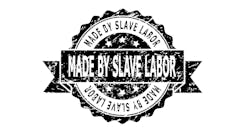A final rule issued by the U.S. Department of Labor raises the minimum salary threshold for an employee to qualify for overtime to $35,568 a year as of Jan. 1, 2020, an increase from the current $23,660.
By doing so, the new regulation also increases the weekly salary level from the current $455 to $684 per week. In addition, DOL raised the total annual compensation level for highly compensated employees from the current $100,000 to $107,432 per year, representing a more modest increase than originally proposed.
Employers also can use nondiscretionary bonuses and incentive payments (including commissions) that are paid at least annually to satisfy up to 10% of the salary level. Employers should note that the final rule makes no changes to the “primary duties” tests of the exemptions (such as outside sales) that do not specifically include a salary requirement even if the employee earns a salary.
The new published increase is slightly more than the $35,308 minimum that DOL proposed earlier this year. The new minimum represents the first change in the salary limit since 2004, and the Labor Department also promised that in the future it will update earnings thresholds more regularly, agreeing that the announced change was too long overdue because “fixed earning thresholds become substantially less effective over time.”
“For the first time in over 15 years, America’s workers will have an update to overtime regulations that will put overtime pay into the pockets of more than a million working Americans,” said Acting U.S. Secretary of Labor Patrick Pizzella when the final rule was announced on Sept. 24. (Two days later, the Senate voted to confirm Eugene Scalia as Secretary of Labor).
“This rule brings a commonsense approach that offers consistency and certainty for employers as well as clarity and prosperity for American workers,” Pizzella added.
DOL estimates the rule will make 1.3 million American workers eligible for overtime pay under the Fair Labor Standards Act (FLSA) and called this increase to the salary thresholds “long overdue in light of wage and salary growth since 2004.”
The department also estimates that an additional 101,800 workers will be entitled to overtime pay as a result of the increase to the highly compensated employees salary minimum.
The new rule calls for periodic reviews to update the salary minimum in order to keep up with inflation, but not as part of an automatic scheduled process. Changes will continue to require going through the federal notice-and-comment rulemaking procedures before they can go into effect.
An increase in overtime minimum salaries that had been adopted in 2016 by the Obama administration’s Labor Department was blocked by a federal court before it could go into effect. It would have nearly doubled the salary threshold to $913 per week—$47,476 per year—and included automatic increases to the minimum salary every three years. The rule drew strong opposition from employer groups who argued that, while a change was needed, the new minimum was unreasonably high.
After the new administration took office, the Trump DOL then initiated a proposed rulemaking procedure for setting a new limit. Prominent labor and employment attorneys expect labor advocates and their allies will mount legal challenges to the new rule as well.
“Today’s rule is a thoughtful product informed by public comment, listening sessions and long-standing calculations,” declared DOL Wage and Hour Division Administrator Cheryl Stanton—whose office is responsible for enforcing the FLSA—in the Sept. 24 announcement. “The Wage and Hour Division now turns to help employers comply and ensure that workers will be receiving their overtime pay.”
Preparing for the Change
Employment attorneys warn employers to start planning now for the changes they will need to deal with when the rule goes into effect in January. While the new rule is expected to face challenges in court, they are not likely to succeed because of the time that was taken and volume of public input gathered by DOL before it finalized the new rule.
“While litigation seems inevitable, employers should not be idle in preparing for this rule to take effect,” says attorney Caroline J. Brown of the Fisher Phillips law firm. “That said, you should not run out tomorrow and make immediate changes to your compensation structure. Instead, you should use this time to start evaluating not just whether changes will be necessary, but how best to make those changes (timing, communications, etc.).”
It is imperative for employers to confirm their prior findings at least for any employee that might receive a salary increase to qualify for exempt status, she says “No employee is automatically entitled to be treated as exempt. In contrast, increasing the salary for an employee that does not meet the duties tests can only make matters worse.”
Employers should take a close look at whether exemptions that they have been relying on will still apply. To do so, consider the possible application of alternative FLSA exemptions, and develop FLSA-compliant pay plans for employees who have been treated as exempt but who no longer will be under the new rule, Brown recommends.
Attorneys Amy J. Traub and Ashlee C. Grant of the law firm of Baker & Hostetler agree that employers should prepare now to ensure that their payroll procedures comply with the new rule, and they should do so initially by reviewing payroll and salary records to determine which employees will no longer be considered exempt.
“For those employees, companies will need to decide whether or not to keep the compensation rates the same but begin paying these employees overtime for all hours worked over 40 in any given workweek or to increase their annual salary to meet the new minimum salary thresholds,” Traub and Grant explain.
Allan Bloom, an attorney with the Proskauer Rose law firm, points out that the federal rule won’t make a difference to employers in states with already-higher salary minimums for exemption, such as New York’s $58,500 annual minimum for most exempt executive and administrative employees in New York City, or California’s annual salary requirement of $49,920 for employees of large employers to be considered exempt.
For other employers, Bloom recommends that they start no later than this fall by answering several questions, including whether they will raise the salaries of exempt workers to the new minimums or reclassify them to overtime-eligible.
He says that if an employer chooses to reclassify some employees to overtime-eligible, it needs to ask itself: What are our communication plans? Are human resources, payroll, benefits, and other staff prepared for the change in classification? Is the company ready to manage the potential overtime costs? Have we considered the alternatives to paying reclassified employees on an hourly basis?
Questions also arise when an employer chooses to take advantage of its right under the new rule to use bonuses, commissions, or other incentive compensation as a credit toward the new salary threshold. Bloom says employers also need to make sure supervisors understand what kinds of hours are considered “hours worked” (for example, certain travel time and time spent working from home or remotely).
Other questions that need dealing with are: When will you start counting “hours worked” if January 1 falls in the middle of your workweek? Does your workweek coincide with the effective date of the new rule (a Wednesday), or does it begin, for example, on the Sunday or Monday before the change? “If so, are you prepared to pay your exempt employees at least $684 for the work week in which January 1 falls?” Bloom asks.
If an employer can answer all of these questions positively—possibly with the help of legal counsel in some cases—then it should be able to make the transition to the new system with the minimum of pain or threat of liability.




